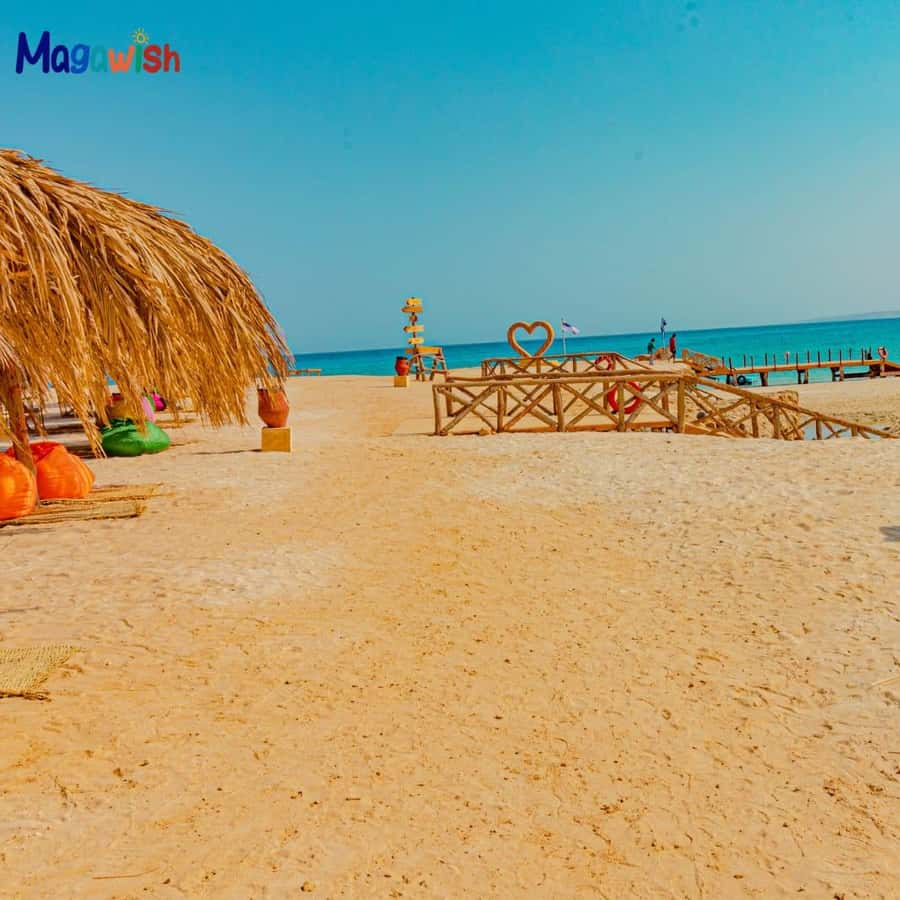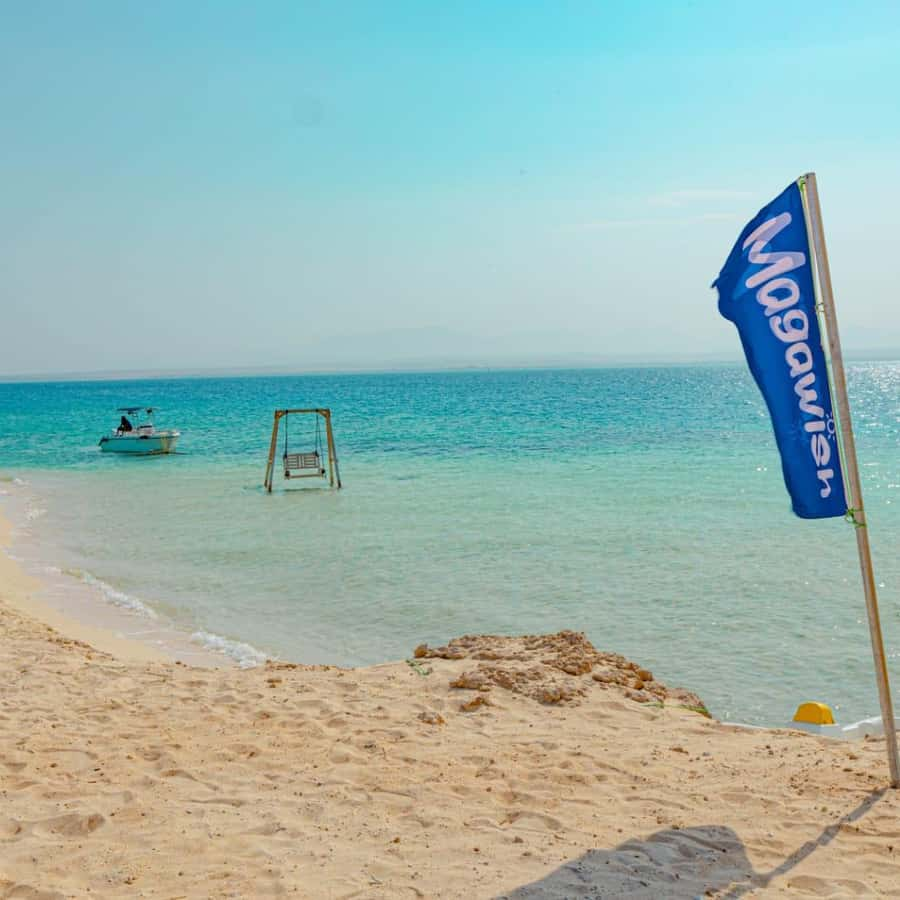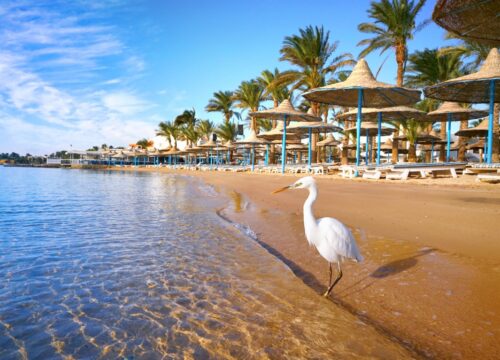The History of Magawish Island Cruises: A Journey Through Time
The Discovery of Magawish Island
The story of Magawish Island as a tourist destination begins in the early 20th century when local fishermen from Hurghada first recognized its potential. Located approximately 30 minutes by boat from Hurghada’s shoreline, this horseshoe-shaped island remained largely unknown to outsiders until the 1970s. Its name “Magawish” (meaning “chairs” in Arabic) reportedly comes from the natural rock formations along its coast that resemble seating areas. British marine biologists conducting Red Sea surveys in 1968 first documented the island’s exceptional coral formations, noting its unique position where deep water meets shallow reefs, creating ideal conditions for diverse marine life.
Early Tourism Development
The first organized visits to Magawish Island began in 1983 when Hurghada’s fledgling tourism industry started exploring nearby islands. Initially, simple wooden fishing boats carried adventurous European divers to the site. By 1987, the Egyptian government recognized the island’s tourism potential and established basic mooring points to protect the coral from anchor damage. The first proper cruise boats arrived in 1991 – converted fishing vessels with added sun decks that could carry 20-30 passengers. These early excursions focused primarily on diving and snorkeling, with visitors bringing their own picnic lunches to enjoy on the island’s pristine beaches.
The Golden Age of Island Cruises
The period between 1995-2005 marked the golden age of Magawish Island cruises as Hurghada’s tourism infrastructure expanded dramatically. Specialized cruise boats were designed with glass bottoms for coral viewing, and operators began offering full-day packages including meals and equipment. The island gained international recognition in 1998 when a French marine documentary featured its unique “Coral Garden” – a shallow, protected area with exceptionally colorful and accessible reef formations. During this era, daily visitor numbers grew from about 50 to over 500, prompting the implementation of environmental protection measures to prevent damage to the delicate ecosystem.
Environmental Protection Efforts
As visitor numbers increased, concerns grew about the impact on Magawish Island’s fragile marine environment. In 2003, the Red Sea Governorate established strict regulations limiting daily visitors to 300 and designating specific swimming and snorkeling zones. Mooring buoys were installed to prevent anchor damage, and a “no-touch” policy was enforced for all marine life. The Hurghada Environmental Protection and Conservation Association (HEPCA) began conducting regular reef monitoring in 2006. These measures proved successful – recent surveys show the coral coverage around Magawish has actually increased despite growing tourism, making it a model for sustainable marine tourism.
Modern Cruise Experience
Today’s Magawish Island cruises offer a sophisticated blend of comfort and adventure. Modern vessels feature air-conditioned cabins, sundecks, and professional snorkeling platforms. The typical full-day itinerary includes multiple snorkeling stops, a beach barbecue lunch, and often a visit to the nearby Abu Minqar island. Glass-bottom boat tours allow non-swimmers to appreciate the underwater wonders, while certified divers can explore deeper sites like “Dolphin House” – a frequent dolphin spotting location northeast of the island. Evening sunset cruises have become particularly popular, offering a magical view of the island’s coastline as daylight fades.
Cultural Significance
Beyond its natural beauty, Magawish Island has become culturally significant as a symbol of Red Sea tourism. It features prominently in Egyptian tourism promotions and has hosted numerous celebrity visitors. Local folklore tells of Bedouin fishermen who would camp on the island during full moons, believing its curved shape collected special lunar energy. This mystical reputation persists today, with some New Age groups organizing special “full moon cruises” to the island. The annual “Clean the Reef” event, where volunteers remove debris from the surrounding waters, has become an important community tradition since its inception in 2012.
Challenges and Adaptations
The Magawish cruise industry has faced several challenges, including the 2011 tourism downturn and 2020 pandemic closures. Operators responded by implementing enhanced safety protocols and diversifying offerings. Many now combine the island visit with other experiences like submarine tours or desert safaris. Climate change presents an ongoing concern, with rising sea temperatures occasionally triggering coral bleaching events. In response, some cruise operators now include educational components about marine conservation in their programs, partnering with local research institutes.
Future Developments
Looking ahead, plans are underway to make Magawish Island cruises even more sustainable. Experimental solar-powered boats began testing in 2022, and there’s talk of creating an artificial reef to divert some pressure from natural formations. Virtual reality experiences are being developed to allow “digital snorkeling” for those who can’t enter the water. However, authorities remain committed to preserving the island’s essential character – a place where visitors can experience the Red Sea’s natural wonders in an unspoiled setting. With careful management, Magawish Island promises to continue enchanting visitors for generations to come, maintaining its status as one of Egypt’s premier marine destinations.
Hurghada is a coastal city that serves as the largest city and capital of the Red Sea Governorate of Egypt. Hurghada has grown from a small fishing village to one of the largest resort destinations along the Red Sea coast, stretching close to 40 km.



